About General Dentistry & Ceramic Treatment
We are committed to providing treatment plans that meet each patient’s individual needs and expectations.
There are various options when it comes to dental care. We begin by listening carefully to your goals—such as how you would like your teeth to look or the type of treatment you prefer—and then provide clear explanations regarding the cost and treatment duration.
Of course, we also offer professional recommendations based on what we believe is the ideal outcome for your specific case.
After treatment, we will continue to support your oral health with advice and follow-up care to help you maintain a healthy smile for the long term.
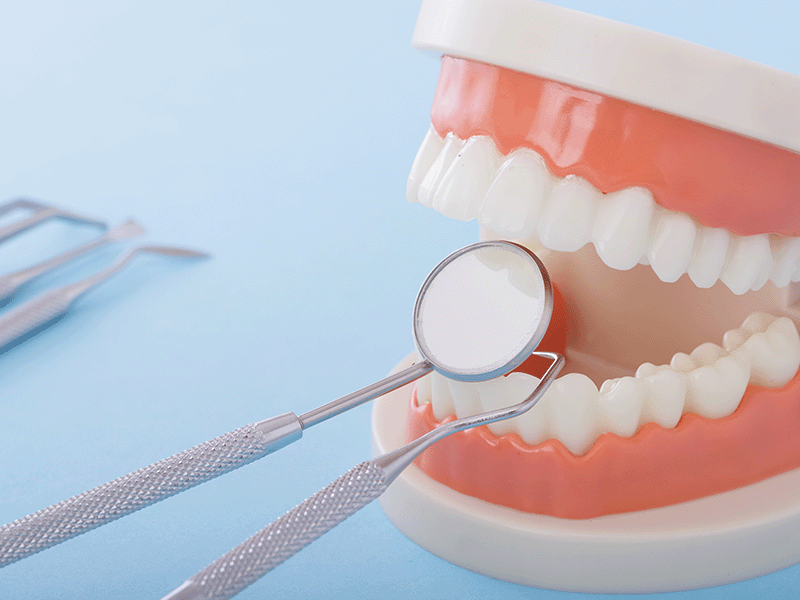
About Cavity Treatment
A cavity (dental caries) is a progressive and irreversible condition in which acids produced by cavity-causing bacteria—such as Streptococcus mutans—gradually dissolve the tooth enamel.
To treat cavities, we remove the decayed areas and restore the tooth using fillings or crowns, depending on the extent of the damage.
The treatment method varies according to the stage of the cavity:
CO, C1, C2, C3, or C4, with each stage indicating a different level of progression.
CO: Teeth in the pre-cavity stage (areas to be monitored)
This is a condition where the enamel on the surface of the tooth has begun to demineralize, appearing as a white spot.
At this stage, no cavity (hole) has formed yet, and it is considered the early stage of tooth decay.
There are usually no symptoms such as pain at this point.
Treatment Methods
To prevent cavities, it’s important to avoid frequent snacking by setting specific snack times and to encourage remineralization through the use of fluoride.
For areas that are more prone to decay—such as the grooves of the molars—we may apply sealants, a protective resin that fills in the grooves and helps keep plaque and food particles from accumulating.
We also perform regular follow-up checks to monitor these areas and prevent further progression.
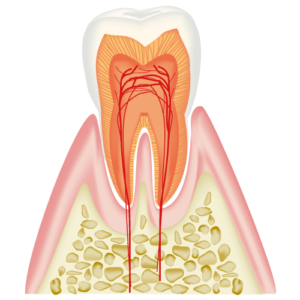
C1: Cavity within the Enamel
This is an early-stage cavity that remains within the outer layer of the tooth (the enamel).
With proper preventive care, further progression can often be avoided.
Depending on the size and location of the cavity, treatment may involve removing the decayed area and placing a filling.
Treatment Methods
If treatment is needed, only the decayed portion of the tooth is minimally removed, and the area is filled with a composite resin.
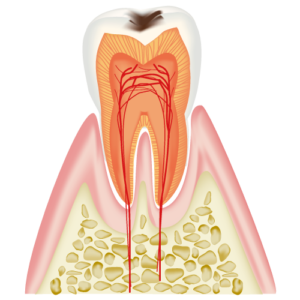
C2: Cavity Reaching the Dentin
This stage of tooth decay has progressed beyond the enamel and into the dentin beneath it.
As the decay approaches the nerve (pulp), you may begin to feel sensitivity to cold and increasing pain.
Without treatment, the decay can worsen and spread deeper into the tooth, so early detection and treatment are essential.
Depending on the size of the cavity, a filling or a crown may be required to restore the tooth.
Treatment Methods
As with C1 cavities, composite resin may be used to fill the affected area.
If the decay is more extensive, the tooth will be shaped, and an impression will be taken to create a custom inlay made of metal or ceramic to restore the damaged portion.

C3: Cavity Reaching the Dental Pulp (Nerve)
The decay has reached the tooth’s nerve (dental pulp), causing inflammation known as pulpitis, which can result in severe pain.
Treatment Methods
If the inflammation of the dental pulp is severe, the pulp must be removed—a procedure commonly known as "nerve removal."
The root canal is then cleaned and disinfected, and finally filled with a special material.
This treatment, called root canal therapy, typically requires multiple visits.
Because a tooth without pulp becomes more fragile, it is usually restored with a post and a crown to provide strength and protection.
In some cases, when the pulp can still be preserved, a protective medication may be applied to attempt to save the pulp.。
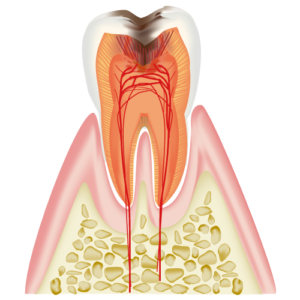
C4: Severely Decayed Tooth with Extensive Structure Loss
This is the final stage of tooth decay. Most of the tooth structure is destroyed, leaving only the root.
Because the dental pulp has died, the pain may decrease, but pus often begins to accumulate at the tip of the root.
If left untreated, bacteria can spread into the jawbone, potentially causing bone loss and negatively affecting surrounding teeth.
Treatment Methods
At this stage, tooth extraction is usually necessary.
Once the area has healed, the missing tooth can be replaced with a bridge, partial denture, or dental implant, depending on your condition and preference.
We strongly recommend seeking treatment before the decay progresses to this point.
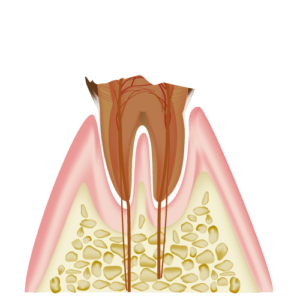
About Ceramic Restorations
Uncompromising Quality and Aesthetics
Ceramic restorations offer both exceptional aesthetics and long-lasting durability—helping you smile with confidence.
Using high-quality ceramic materials, we recreate the natural translucency and shine of real teeth.
This treatment is ideal for those who wish to achieve both oral health and beauty.
Restorative Materials for Aesthetic Ceramic Treatments
Zirconia
Zirconia is a material known for its exceptional hardness and beauty—it’s even used in artificial diamonds.
Its high durability makes it especially suitable for use in molars and other areas exposed to strong chewing forces.
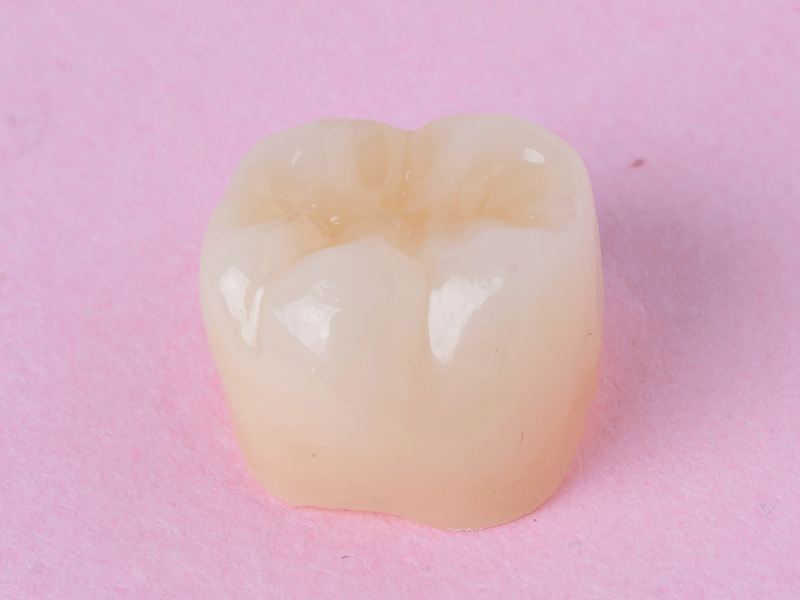
Advantages
- White with a natural translucency, offering an appearance that blends seamlessly with surrounding teeth
- Highly resistant to discoloration, even with long-term use
- Plaque-resistant surface helps maintain a clean and healthy oral environment
Disadvantages
- Its high strength may place added stress on the opposing natural teeth.
- It is less aesthetic compared to e.max in terms of translucency and natural appearance.
e.max
e.max is a ceramic material reinforced with glass fibers, giving it a high level of translucency and natural beauty.
While it is strong and durable, it is not excessively hard, making it gentler on opposing teeth and ideal for maintaining overall oral health.
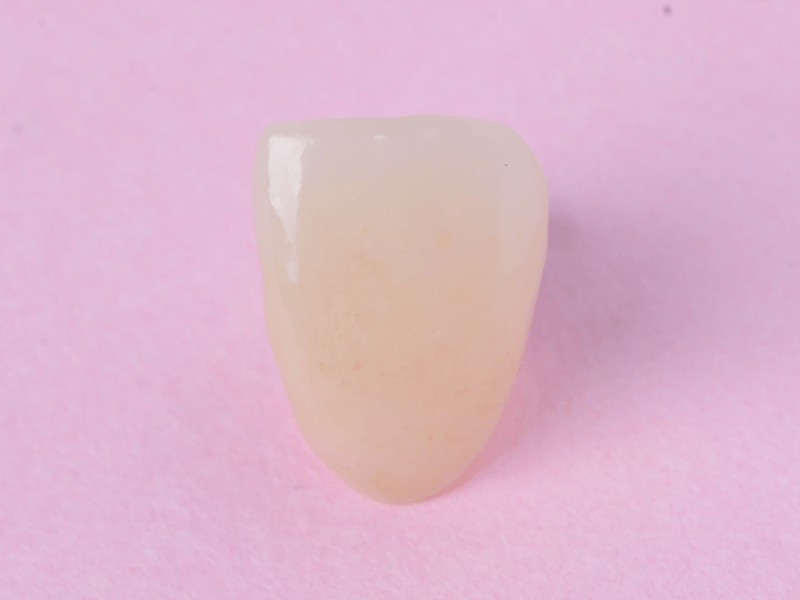
Advantages
- The material resists plaque buildup, helping to keep the oral environment clean and healthy.
- It is highly resistant to discoloration and offers a natural shade and translucency similar to real teeth, resulting in a beautiful and lifelike finish.
- With a hardness similar to natural teeth, it reduces the impact on opposing teeth and helps maintain overall bite balance.
Disadvantages
- It is less strong compared to zirconia.
- It may not be recommended for patients with habits such as teeth grinding or clenching.
- It generally requires more tooth reduction than zirconia.
Click Here to Book an Appointment
If you have any concerns about your health or oral condition,
please feel free to consult Sakura Clinic, a Japanese medical and dental clinic in Dubai.
